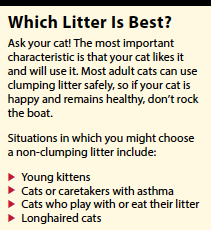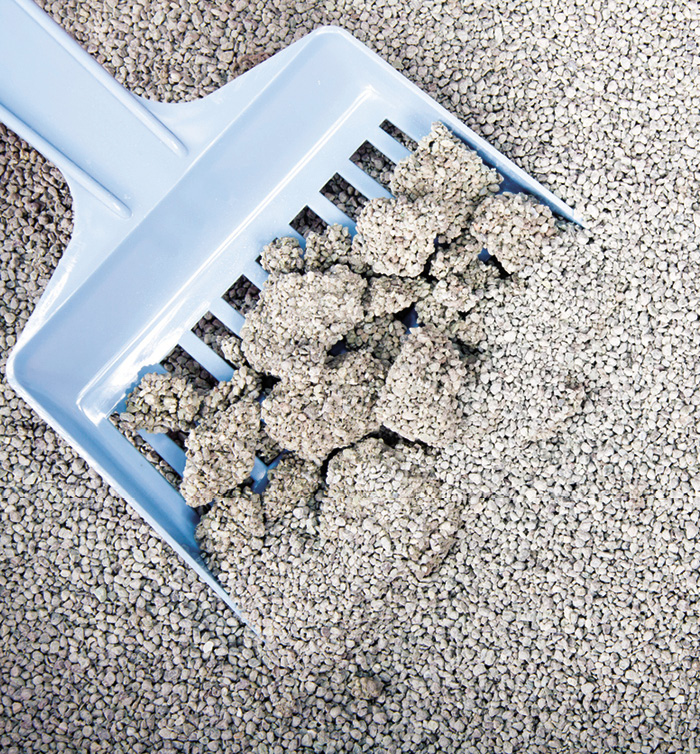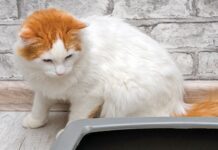There are a lot of cat litters out there, and deciding which to use starts with whether you—and your cat—prefer clumping or non-clumping litter.
This Litter Forms Clumps
The reason it’s called clumping litter is that when it is exposed to moisture (i.e., cat urine), it absorbs the liquid and hardens into a solid clump. This makes scooping the litterbox easy, as you can use a slotted scoop to remove waste while leaving clean litter behind.
Clumping litter also typically has pretty good odor control, although this can vary depending on the exact composition of the litter, the number of cats that are using it, and how often you clean the box.
Most clumping litter is clay-based, but it can also be made from other materials, including corn cobs and soybean hulls. For example, a 2023 study published in Bioresource Technology Reports compared the odor control, dust formation, and clumping characteristics of litter made from a combination of soybean hulls and soybean hull biochar to more conventional commercially available bio-based litter with respect to odor control, dust formation, and clumping. The researchers found that it was superior in all these categories.
Use Caution
Clumping litters do have their downsides, though, and are not the best fit for every cat. If your cat swallows any litter, either directly or while grooming, the moisture in her gastrointestinal tract can trigger it to clump, which may lead to irritation or even obstruction of the GI tract. The same thing can happen if your dog gets into the litterbox!
You can reduce this risk by using blankets and litter traps around the litterbox to help keep litter close to the box and off your cat’s paws. If you have a medium or longhaired cat, trim the long hairs on the bottom of her feet to reduce litter tracking.
Clay-based litters have a reputation for being dusty, though this varies widely among products. These dust particles can be inhaled and cause irritation inside your cat’s lungs and in the lungs of people. This problem is particularly important to consider with cats and people that have sensitivity to inhaled allergens (i.e., asthmatics).
Clumping litter should not be used with kittens under 4 months of age. These little guys have delicate systems and are still working out the finer points of life, such as not eating things that aren’t food and how to properly groom themselves.ν
 Which Litter Is Best?
Which Litter Is Best?
Ask your cat! The most important characteristic is that your cat likes it and will use it. Most adult cats can use clumping litter safely, so if your cat is happy and remains healthy, don’t rock the boat.




